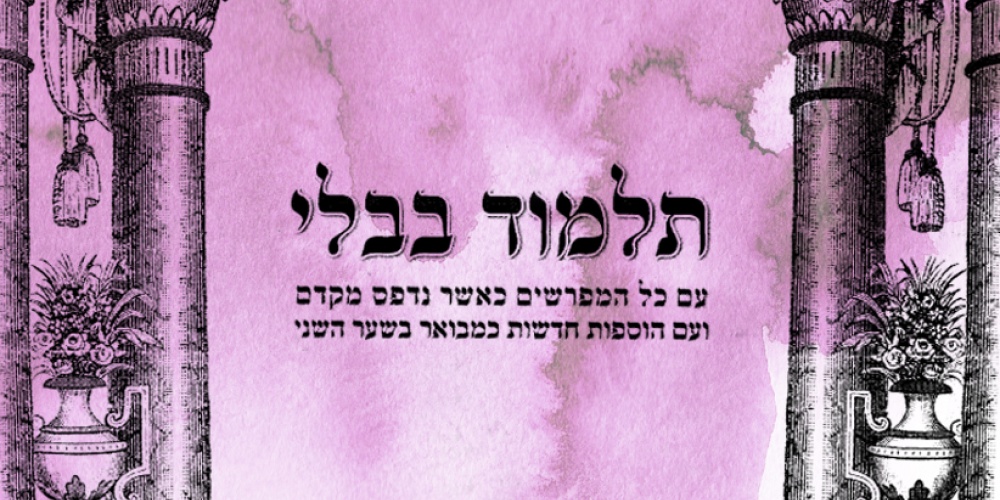
Death, as we have often noted, is the primary source of tumah, impurity, with a corpse classified as avi avot hatumah, the grandfather of tumah.
Ironically, life itself can also create tumah and hence, after giving birth, a mother is tameh; seven days for a boy and 14 for a girl. Apparently, the Torah wants to remind us that the process of death begins the moment life begins. The ritual recognition of this rather sobering thought is meant not to depress us, but to inspire us. It is the parents' responsibility to raise the child to a live of purity and holiness—and in practice, in most cases it is the mother who carries out this role. With the excitement surrounding a newborn, we need to be reminded of the primary purpose of having children.
At the same time, having children helps to defeat death. Ironically, it is precisely when one has children that we are reminded of our own mortality. We are going to die, but we live on through the values we teach our children who, in turn, live on by teaching their children[1]. Physically, we are mortal but spiritually, we continue to live long after we die. As our Sages so beautifully understood, life is not primarily determined by our physical state. “The righteous, even in death, are considered alive; and the wicked even as they live are as if dead[2]”.
This idea is, not surprisingly, reflected in the laws of tumah v’tahara. Despite the fact that a woman will bleed for many days after childbirth, that blood imparts tumah for only 7 or 14 days. At that point, the new mother goes to the mikvah, removing her status as a nidah. The bleeding during the following 33 days (for a boy) or 66 days (for a girl)[3] is the blood of tahara, purity, and despite her continued bleeding, she may be intimate with her husband.
The loss of blood symbolizes both life and death—it is up to us to determine which is dominant.
With the birth of a boy, day eight is also the day of the brit. The Torah itself links the impurity of seven days with the obligation to do a brit milah on the eighth day. “If a woman conceives and gives birth to a male, she shall be unclean for seven days; as [in] the days of her menstrual flow, she shall be tameh. And on the eighth day, the flesh of his foreskin shall be circumcised” (Vayikra 12:2-3). Not only the blood of the mother is pure; so, too, is the blood of the baby, the blood by which the newborn is brought into the covenantal community. The purity of the mother and baby join together on the eighth day.
The Gemara suggests a very different reason for the brit milah on the eighth day, one focused not on spirituality and purity, but on physicality. “And why did the Torah say milah is on the eighth [day]? So that it should not be that all [the guests] are happy, and his mother and father are sad” (Niddah 31b). As Rashi explains, had the brit been any earlier, the newborn parents would not be permitted intimacy, diminishing their joy at this special moment!
This is a fascinating, even if perhaps a slightly “immodest”, answer. However, such an answer rings hollow today, as this biblical leniency allowing for intimacy after seven days has not been followed for many years. Women do not go to mikvah until seven days after all bleeding after childbirth has stopped, making this teaching rather outdated.
Hence, the Chidah, in his Talmudic commentary Marit Haayin, explains that “Rav Shimon bar Yochai gave a simple answer for his time[4]”.
But what about our time? To answer this, he quotes the Maharam Ibn Chaviv, who notes the Talmudic teaching that “Every mitzvah that the Jewish people accepted upon themselves with joy, such as circumcision…they still perform with joy” (Shabbat 130a). The joy of mitzvot is contagious, and passed down from generation to generation. Rav Moshe Feinstein, zt”l, famously lamented that many Jews in America were turned off from Torah by hearing their parents complain how hard it was to be a Jew. Those parents were not wrong—it was very hard to be a Jew (and this in America; how much more so in Europe?)—but children have little interest in leading a hard life.
When children witness the joy of being Jewish, feel the excitement in the home as one readies for Shabbat, the joy of helping others, the satisfaction of volunteering for our people, they, too, want to join. The original reason a brit milah was an especially joyous occasion for all matters little. What matters is that Jews celebrated a brit with gusto. And 2,000 years later, bringing our children into the covenant of Avraham Avinu remains one of the joyous occasions of parenthood. Thank G-d, it is much easier to be a Jew today. But easy or not, we must approach Jewish living with great joy. It is a wonderful privilege to be a Jew!
[1] Of course, having children is not the only way to live beyond the years granted to us on this earth. One can do so by inspiring others, thereby leaving a legacy for future generations. “And you shall teach your children—these are your students”. Those who have signed “The Giving Pledge”, for example, will continue to make an impact in this world long after they are in the next.
[2] It is not by chance that this past Shabbat, we read parshat Chayei Sarah, the life of Sarah, despite the fact that we read nothing about Sarah’s life—only about her death.
[3] The Torah does not specify why the periods of both tumah and tahara are doubled with the birth of a girl. Presumably, this is due to the fact that by giving birth to a girl, one is giving birth to a new potential mother.
[4] This is a fascinating, important, and often misunderstood concept. Our understanding of the mitzvot can and should change over time. The meaning given to a mitzvah in one generation may have little meaning or relevance for another. The right and obligation of each generation to find new meaning in explaining the reasoning behind mitzvot helps ensure that the Torah remain an eitz chayim, a tree of life for all times. Perhaps this is the primary reason the Torah itself almost never gives the reasoning for a mitzvah; that is left to each and every generation to find.



